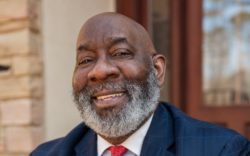Amid reports of ambulance response times as long as 20 minutes or more, representatives from both local hospitals defended the private emergency medical service they hired 10 years ago at an Athens-Clarke County Commission work session last week.
“We come before you confident that National EMS does a fantastic job,” said Dee Burkett, executive director for patient services at Piedmont Athens Regional.
Athens Regional and St. Mary’s Hospital were losing $1 million a year on ambulance service when they contracted with Conyers-based National EMS in 2009. (It has since been bought by Priority Ambulance, a larger company based in Tennessee.) Both hospitals and the ACC and Oconee County governments contribute $100,000 each to subsidize National EMS.
Since then, former emergency medical technicians and local residents have raised concerns that National EMS takes too long to respond in some cases, often because it’s responding to more lucrative non-emergency calls, such as transferring patients between hospitals. The progressive group Athens for Everyone analyzed Georgia Department of Public Health records last year and found that National EMS responded in less than nine minutes just 39% of the time. Its contractual goal is to respond within nine minutes 90% of the time. National EMS said those figures are misleading, because they lump in emergency and non-emergency calls.
Burkett presented data showing that National EMS responded to 88% of 911 calls in Clarke County in less than nine minutes and 92% of calls in Oconee County in less than 13 minutes. Athens Regional and St. Mary’s would have no reason to keep National EMS if the company weren’t performing, he said. “This ambulance service functions as an extension of each hospital,” he said. “We are responsible for the service and its operational effectiveness, because what they do impacts what we do in the hospital.”
Commissioner Patrick Davenport, who lives in Winterville, said he waited 18 minutes for an ambulance to come for his mother, then wound up driving her to the hospital himself. He called the data “a hard pill to swallow.” Other constituents have told him they had to wait over 20 minutes, he said. “It’s so bad in District 1, people say it’s better to drive to the hospital instead of calling EMS,” he said.
Commissioner Russell Edwards asked how many times National EMS had taken over 15 minutes to respond. Such long response times are usually because the ambulance driver couldn’t find the location, or the caller or dispatcher gave the driver the wrong address, Burkett said. People also tend to exaggerate the length of time they waited, Burkett said. “It can seem like an eternity if you’re calling 911,” he said. “I’ve been on the receiving end of that as a customer, so I know minutes can change character on you when you’re calling EMS.”
Sometimes, cell-phone calls don’t even go to the right county. Commissioner Ovita Thornton said constituents in the Nowhere Road area have told her their 911 calls are sometimes answered by dispatchers in Jackson County. That’s probably because the closest cell tower to the caller is in Jackson County, said Keith Kelley, captain of the ACC Police Department’s communications division.
Kelley’s proposal to streamline dispatching caught the interest of commissioners. Currently, an ACCPD dispatcher answers all 911 calls, then decides whether to route them to the fire department or National EMS. EMTs in the fire department respond to car wrecks and cardiac arrests, and can provide treatment until an ambulance arrives.
“If I have to say I’m having trouble breathing twice, the second time I might not be breathing,” Commissioner Mike Hamby said.
Commissioners expressed little interest in ACC taking over ambulance service—which would likely cost millions of dollars—but Commissioner Jerry NeSmith urged people to bring their complaints to him or Commissioner Andy Herod, who sit on the oversight committee.
Like what you just read? Support Flagpole by making a donation today. Every dollar you give helps fund our ongoing mission to provide Athens with quality, independent journalism.










